What you need to buy for a new puppy
After agreeing on the ground rules and puppy proofing your home (as per Part 1 of our New Puppy Guide), it’s time to plan ahead and make sure you have a checklist of all the essentials ready before your new puppy comes home.
Because the last thing you want to be doing is leaving puppy at home alone on his first day while you go out shopping!
So where do you start? With so many products out there, it is easy to go a little overboard when shopping for your new puppy.
To help, the Furbubba team have done the research for you and compiled a checklist of the 14 essential items you need to buy for your puppy. We’ve also included some hints and tips to guide you when selecting each item.
New puppy checklist
What to buy for a new puppy? Our new puppy checklist gives you the 14 essential items you’ll need.
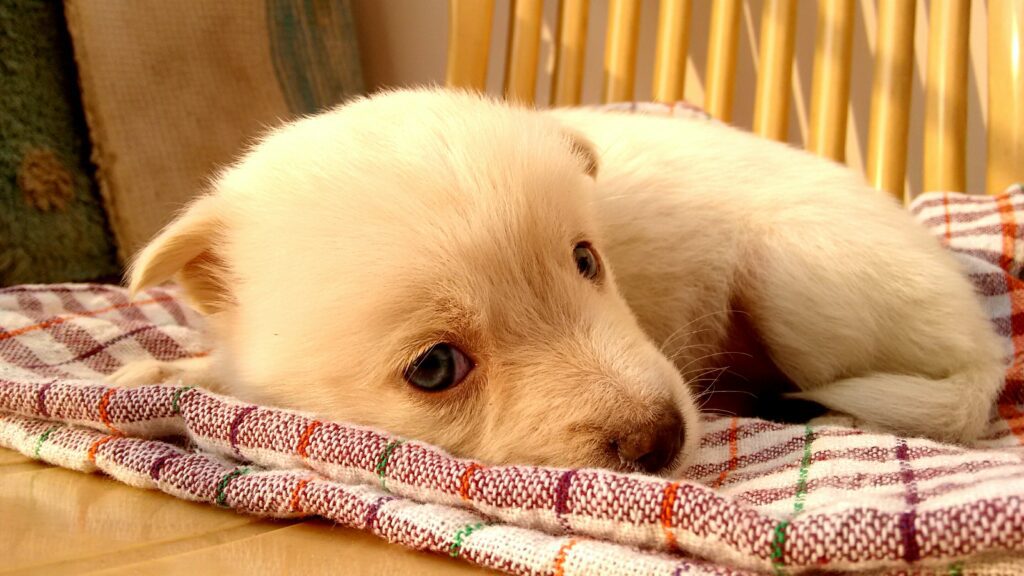
14 Essential items for your new puppy
1. Collars
This is one of the first things you’ll need to buy. There is a huge range of collars available to reflect your puppies personality, from glam to sporty, from classic to tough.
But don’t spend too much when they are little, because depending on the dog breed you will have to repurchase a few times as your puppy grows into adulthood.
Function: Aside from the fun aesthetic side of things, when puppy gets older, you may want to consider the functional aspects. There are training collars available, also known as “Martingale Collars” or “Half-Check Chain Collars”. These are used for obedience training and for dogs that have a particular talent for slipping out of their collar!
They are different to “Choke Collars” that do not have a mechanism to stop the tightness around your dogs neck. And you certainly don’t want a “Prong” or “Pinch Collar” as they actually have prongs facing inwards, and you can only imagine what happens as they tighten around a poor dogs neck. If they are not banned in your country already, they should be.
Weight: A comfortable, appropriately weighted collar is also a must. So heavy leather might have to wait until your puppy gets older.
Size: To gauge the size of the collar needed, you should be able to slip two fingers under the collar when it is on. Any tighter and there is no room for movement and growth. Any loser and he will slip it off.
2. Dog Tag
Even before your puppy is allowed to go out into the big world and walk the streets, you should have a dog tag on his collar. There are hundreds of different types and sizes out there to choose from.
Unfortunately, you never know why or when your dog might run off. He might be bored at home, be spooked by something or simply couldn’t help himself following a delicious smell. If the worst does happen, you’ll be glad that puppy is wearing a dog tag with your contact details on it.
Most people engrave the tag with their mobile / cell phone number. Some people include a fun message, others prefer to not include their dog’s name and instead note that they are “chipped”. It’s standard practice and law in most countries to have your puppy microchipped along with his first vaccinations.
By including this message on the dog tag, it encourages the person who found your dog to go to their local vet or animal shelter – where the microchip can simply be scanned and your details will come up. The vet or shelter will have the proper facilities to care for your furbaby until you can get there. Best of all you don’t have to worry about anyone coming to your home or knowing your number.
Some people believe that not including your dog’s name, deters anyone from thinking about keeping your best friend for themselves (unfortunately there are some cases out there). But in most cases, it’s a kind neighbour down the road that knows exactly where your dog lives and makes sure they get home ok!
3. Leash & Harness
Leashes come in a wide range of styles and you should start with one that fits the size of your dog. Obviously, puppy size will be different from adult size. And then as your dog grows you will need to adapt.
- Tough dogs:
The bigger the dog, the stronger the lead you’ll need. There are some very tough brands available who cater for tough dogs that love to chew their leads.
- Active dogs:
who are always on the go, the Furbubba team are all in agreement that you need a leash that is soft to hold. Woven polyester or rope might be strong, but it can cut or burn your hands if you are holding on tight. A soft-touch lead can make all the difference to your training.
- Smaller breeds:
often a retractable lead can provide you with comfort and flexibility. These give you length to run around the park and then retract to a shorter lead when you need greater control such as walking down a busy high street.
- Harness:
Some people prefer to use a harness when walking their puppy or adult dog. This can provide more control without worrying about a collar hurting their neck. However, some trainers suggest that it encourages the puppy to pull using the strength of their torso. And this is how bad habits form.
Whatever type of lead or harness you choose, it will take some time to train your puppy on how to behave when on the lead. The aim is to use reward-based training, so he learns not to pull in the first place. Then once he has learnt ‘loose lead walking’ it doesn’t matter if you have a lead attached to a harness or a collar.
If you do choose a harness, particularly for puppies – it is important to have it fitted properly. A good pet store will invite you to bring your puppy into the store and help you fit the harness.
4. Crate
As mentioned in part 1 of our Puppy Guide, a Crate is not about locking puppy away. It is actually about providing a safe, right-sized, enclosed environment for him to retreat to when he wants his own space.
And it can be a useful tool for you as part of your puppy training techniques.
Don’t be tempted to buy the largest one so it will fit them as an adult dog – too much space and they will poop in the corner! A crate should be big enough for your dog to stand up, turn around and comfortably lie down. It’s meant to be a cosy space, not a Furbubba mansion!
There are a few different crate types for you to consider…
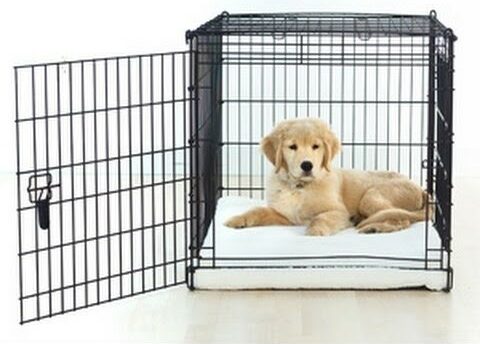
Wire Crate:
These are often cheaper, especially at large sizes. They can come with extra panels so you can size the crate to the dog instead of having to buy a new one as they grow. They fold flat for easy storage and are fast to set up and take down – making them easy to clean. They have good airflow and visibility however, you may need to buy a cover if you want to minimise distractions at night.

Plastic Crate:
Strong and durable, plastic crates are usually approved for airline transportation. They are great for carrying small dogs and they do come in larger sizes. Pups often like the darkness and privacy that they offer. For travel purposes, good ones include a water funnel, attached feed bowl and a ‘comfort tray’ – all the plastic elements are removable and are easy to clean. However, they are usually more expensive, bulkier to store and your puppy will be quick to grow out of them.
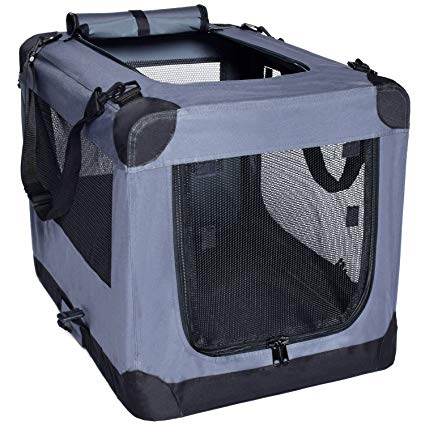
Soft Kennels:
Like a tent, these have collapsible tubing so they can fold flat for storage. Various zippers which allow for multiple openings, airflow and darkness. The covers are removable and washable. And the whole thing is lightweight and easily transportable. But remember, puppies do like to chew, so whilst the fabric is durable, is still fair game!
5. Bedding
Puppies tend to chew a lot at first, so before you buy an expensive designer plush bed, maybe use some old blankets at first to make him comfortable.
After he’s settled down and isn’t chewing everything in sight, you can splash out a bit and get a nice soft bed, move the towels onto the new bed so the smell will be more familiar and inviting. There’s nothing worse than investing in a new bed only to have it rejected because they want to stay on their old smelly, chewed one!
A lot of puppies like the comfort of soft sides to lean up against (like they had when they were snuggled in with their mum and brothers and sisters).
Look for removable covers that you can easily wash if they have an accident. And remember not to use strong smelling washing powder.
Also, a blanket is a good idea. It can travel with puppy from the first pick-up to home and to each new sleeping environment. The continuity between as they grow and change beds can really help puppy settle.
6. Puppy Pen
Your home will be a big scary new environment for your puppy, so it is important to introduce him to each space gradually.
A puppy pen is another must have to help manage this transition. And for the first few months, it allows you to get on with a few things around the house knowing that puppy is roaming safely.
Think of it as a larger containment area. They come in all sorts of shapes and sizes to accommodate whatever size space you have.
Your crate can be placed inside the pen for access in quiet times, but the rest of the space can be used for food, toys and toilet training.
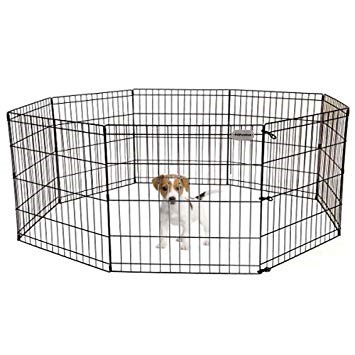
Wire Pens:
These have good airflow and visibility. They are lightweight and whilst a little clunky, they can be collapsed and taken outside. They have a door that can be left open or locked. Just check that the height allows you to easily step over it, so you can get in and out.
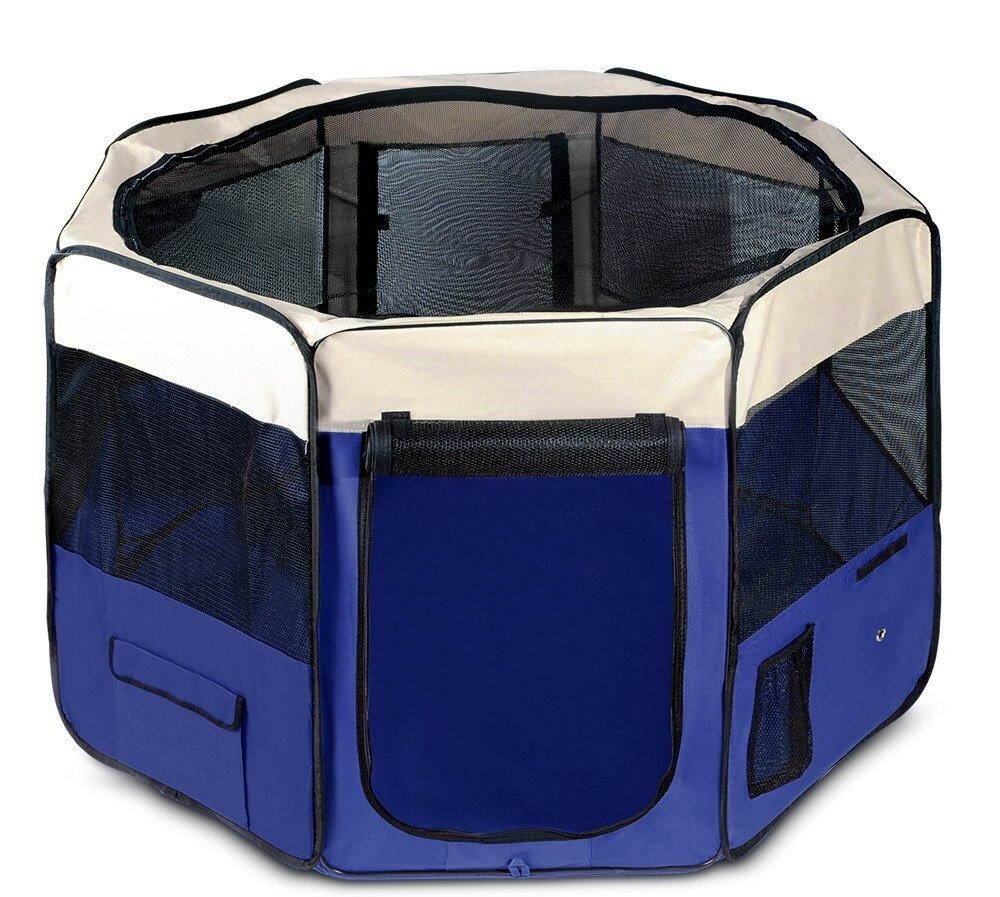
Soft pet playpens:
Whilst these are usually used for cats (because they can easily jump out of an uncovered enclosure), they can be a good option for puppies. Just check that the visibility and airflow are good. The aim is to get your puppy used to his environment, not block him out of it.
7. Food & Water Bowl
Plastic, ceramic, stainless steel? There’s a wide variety of dog feeding and drinking bowls out there.
Size:
Firstly consider the size.
- Your bowls need to be appropriate for your dog’s appetite and thirst – generally speaking, your water bowl will be bigger than your food bowl.
- You also don’t want it to be difficult to reach – small puppies may need smaller sides. When puppy becomes an adult dog he will most likely need a different bowl.
- Larger adult dogs may actually need an elevated platform to aid digestion!
Materials:
Secondly, consider the material the bowls are made from…
- Careful of bowls made of plastic as they can be easily chewed or scratched by your dog, leaving places for bacteria to build up. Also, some dogs build up a reaction to the plastic.
- Ceramic bowls are usually more stylish with a range of designs. They are easy to clean and often dishwasher safe. Check that they are well glazed and there is no cracking over time which can harbour bacteria. But beware, hungry dogs can easily knock over and crack or chip these bowls.
- Stainless Steel bowls are by far the most durable and can stand up to the most passionate eater! They are easy to clean and dishwasher safe. The only watch-out is that over time you will need to inspect for stains or rust – particularly if left outdoors.
Design features:
Finally consider any specific design features, for example…
- Are you feeding puppy outside? If so, you may need to watch-out for ants. Some food bowls are specifically designed for this purpose.
- Look for a non-slip footing so the bowl stays still whilst puppy is eating.
- Automatic bowls are a good idea for water, but rarely for food.
- Collapsible travel bowls may be needed if you plan on being out and about a lot.
8. Puppy Food
Puppies have different nutritional requirements to adult dogs. Their growing, energetic bodies need more protein and calorie-rich foods to help development. It’s not about their size, it’s about their age. And large breed puppies have extra considerations regarding nutritional support for their developing bones.
At first, you’ll need to feed your new pup 3-4 times a day cutting back to two feeds when they are around 6-9 months. Depending on what breed and size you have this may reduce to 1 feed per day for adult dogs. The amount you give depends on the brand of food. Each product has different calories per serve, so follow the guidelines on the pack.
The breeder or shelter will be able to give you guidance on your puppies current eating habits and how to adjust for that breeds’ growth stages. If in doubt, ask your local vet.
If you want to change their food, just add the new one into the mix gradually as this transition will be easier on their stomachs.
9. Food Treats
Healthy treats are a great way to get your puppy’s attention and reward good behaviour. Just be very mindful about how much you give, as you don’t want your puppy to get overweight.
There are an enormous range of dog treats on the market, from liver mixtures to biscuits, to peanut butter. Look for small bite-sized pieces, and check the ingredients. Look out for salt content and additives – the fewer ingredients the better!
If you have time and want to keep it simple, just use small morsels of cooked non-processed meat – like chicken, beef, lamb or pork.
You’ll soon discover what works!
10. Toys
When it comes to toys, there is so much to choose from. The main thing to consider is that puppies loooooove to chew! Fun stuffed animals look very cute, but you might find that they are destroyed in a matter of hours and you don’t want him eating the stuffing inside!
Look for natural rubber toys and things that are designed for chewing. There are ones you can freeze to help with teething and others that can hold treats. These food discovery toys are great as you can fill up the grooves with peanut butter and keep puppy occupied for ages.
Watch out for cheap rope toys as they tend to shred easily, and wooden toys can splinter.
Instead of buying one of everything in your first shopping spree, just choose a couple of good quality items and see how your puppy goes.
11. Grooming Kit
Brushing, clipping, teeth cleaning. A great grooming kit will give you all you need.
- Brushing: Shedding tools may be a little too much for a puppy, but great when he gets older. Instead look for a Glove Brush, which is a gentle way to introduce brushing to your puppy.
- Teeth Cleaning: Vets tell us that dental hygiene is an increasing problem that they are seeing. You can use a toothbrush, but for puppies a finger brush is better. It is rubber and sits like a thimble over your finger allowing you to gently clean their teeth & gums.
- Claw Clipping: You will need some good quality nail clippers that are powerful enough to trim in just one cut. Look for specially designed pet nail scissors.
- Fur Trimming: Depending on the breed you may need some scissors for snipping hair around his face (or his butt!). Obviously, some breeds such as poodles may need shaving as well.
- Shampoo: The only extra thing you’ll need is shampoo – remember dogs have different ph levels in their skin, so you can’t use human shampoo.
If that all sounds too hard, then check out your local groomer who can help you manage it!
12. Toilet Training Pads
Ok, now to the messy part! Disposable house-training pads are the usual way to get started with puppy potty training, but they are generally not great for the environment as they take so long to decompose in landfill.
- Eco Training Pads: There are some Eco-friendly options on the market but they can be more expensive and as with any form of training pad, you don’t want puppy chewing them!
- Newspaper: Some people opt for newspaper, which is obviously a cheaper and more environmentally friendly option. But they are designed for reading and not absorbency so they can be messy when wet. Be warned they are particularly bad if wet paws pick up ink and make footprints all over your house!
- Alternatives: include washable pads, or trays that can be lined with newspaper or biodegradable littler that absorb smells (some people even use cat litter trays for puppies and small dogs).
- Artificial Grass: There are a number of artificial grass options, but they do need daily cleaning and if you are replacing the grass this is not much of an environmental win.
- Real Grass: If you have a lawn, you can try and catch pup every time he needs to go and place him outside. Goodluck! Another option is a real-grass tray – dogs tend to like them, they absorb smell well and are great for apartments. However, the grass will die – so you need to replace every couple of weeks, which can add up.
13. Poop Bags
While we are talking about toilet training – poo bags are another difficult decision from an environmental perspective.
Luckily there are now widely available Eco solutions. But many manufacturers claim to be biodegradable or compostable and they actually aren’t. Some have been challenged by Trade authorities in a number of countries.
As an alternative, check with your municipal council to see if your garden waste bins accept pet waste. Or go bagless and opt for an outdoor compost in your garden. You can use two small shovels for the pick-up, and an at-home composting bokashi or active enzyme solution. Just ensure the garden spot is out of reach from children and vegetable gardens – due to dangerous contaminations.
14. Cleaning Materials
In the first few weeks, as you are toilet training your puppy, he will no doubt have a lot of accidents all over the place, so you’ll need a few cleaning supplies on hand.
- Loads of paper towels or cleaning cloths
- Cleaning spray with disinfectant
- Carpet stain remover and maybe even odour neutralizers.
Don’t forget puppy will be very sensitive to smells – so avoid strong chemicals and try rinsing with cold water to help limit the amount of cleaning product you need and residue you leave.
That’s our new puppy checklist finished. With these 14 essentials, you should be ready for everything.
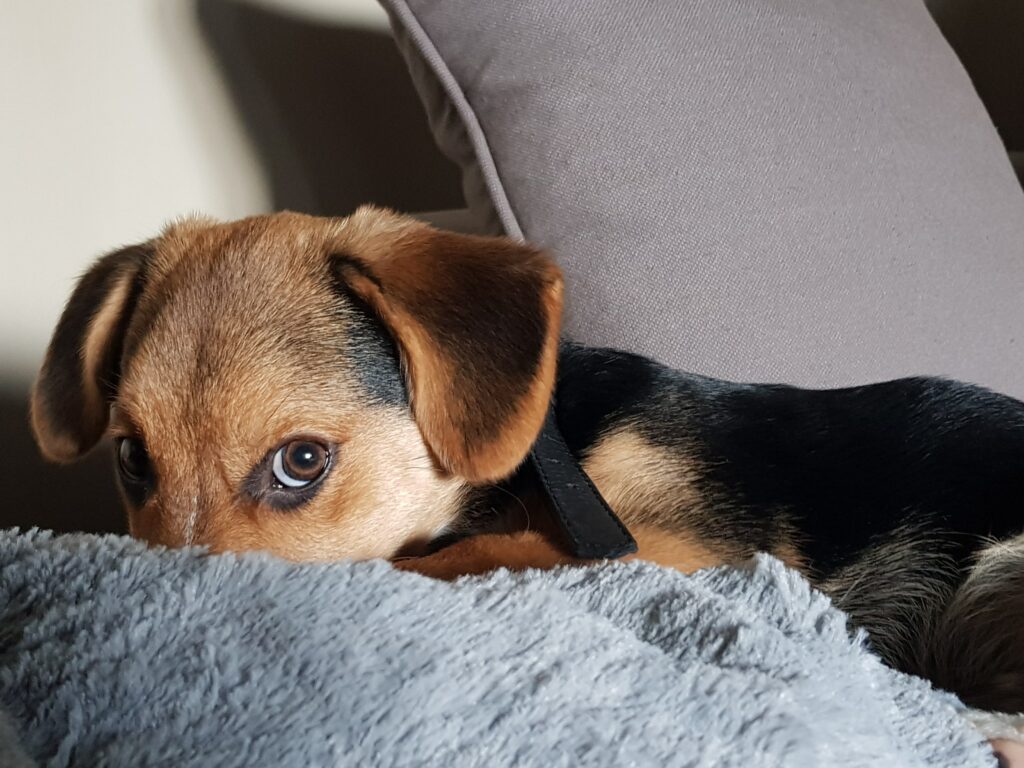
Now that you’ve got the basics covered, check out Part 3 of our Puppy Guide: Getting Home Safely.
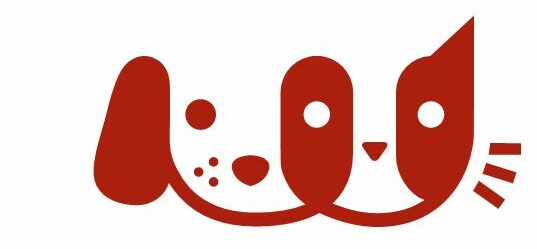
Let us know if you think we’ve missed anything. And don’t forget to share your puppy adventures with us – we love hearing your stories.